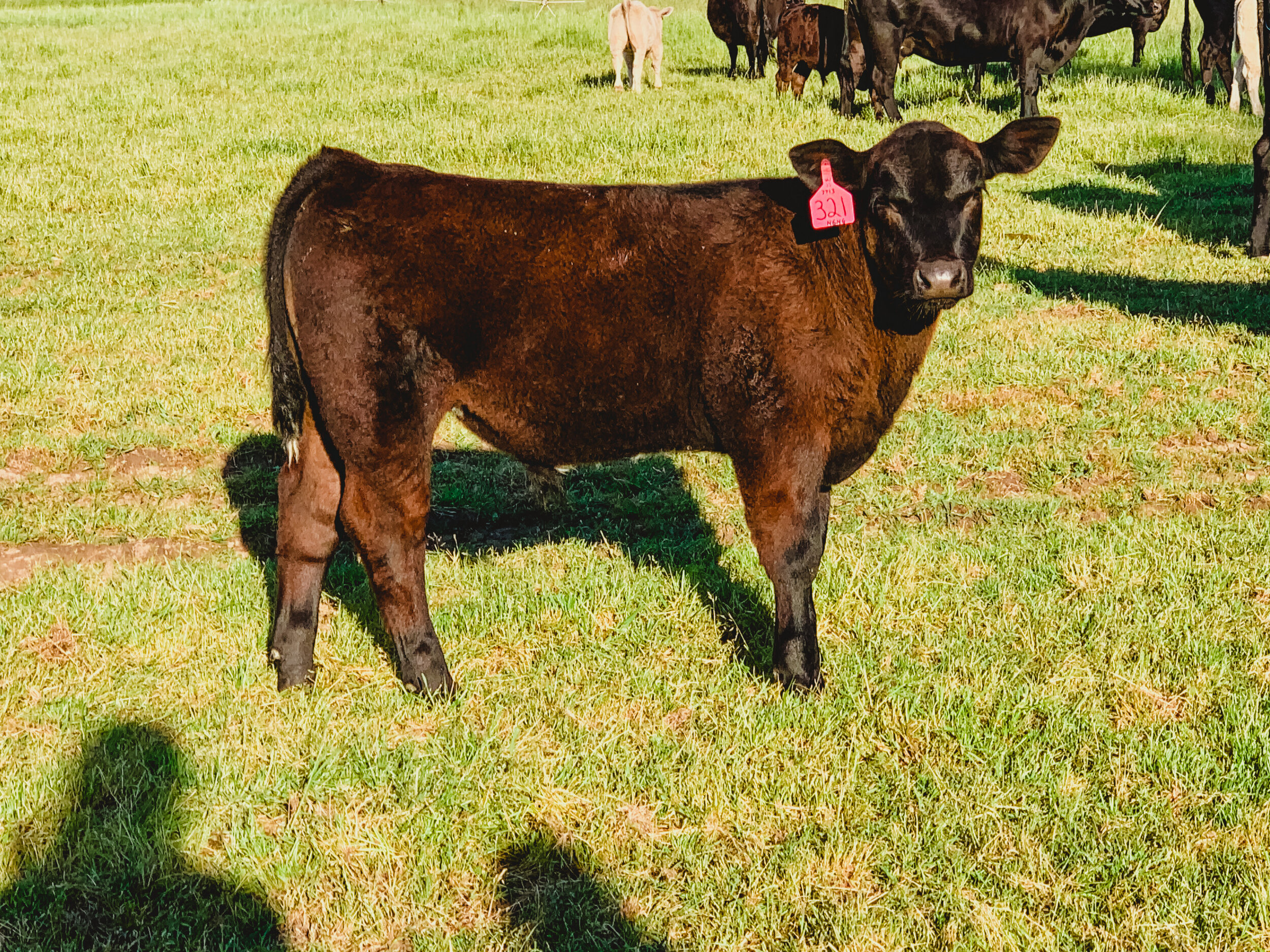Finishing the First Half of 2021
The last week of May 2021 was one for the books and thank heavens that the sunshine began to peek through the constant spring rain showers to give us that summer time feeling! I was off on the great adventure, that entire week, to get my heifers bred.
Heifers are female cows that have not had a calf and can either be a weanling, yearling, or a bred two-year old. My heifers were all born March of 2020 and my hope is that they will have their first calves in March of 2022! Purchased in the fall of 2020, it’s been a long time waiting for this moment. A time full of nerves, apprehension, research, phone calls to mentors and more.
Two weeks before the end of May, I took the heifers over to a nearby neighboring farm where they were given their CIDRs and a shot. The purpose of the shot was to make them expunge any follicle that may be ready for breeding and the CIDRs have progesterone to help bring them into a new heat cycle.
Look how cute these calves are from the place that I was able to breed my heifers at!
Not everyone uses CIDRs, but they are a convenient way to attempt a shortened calving window. When your calves are all born around the same time, it’s easier on the person (me) checking during calving season and it also provides an even weaning weight. An even weaning weight has a multitude of benefits from limiting aggressive pecking orders on older calves over younger calves, while also allowing your feeders to head to market at a uniform weight (i.e. 50 pound spread versus 150 pounds).
One of my mentors doesn’t use CIDRs but jumps into the Artificial Insemination (AI) process at this next step where we added heat identifier patches to the heifers’ tail heads. These were unique and the adhesive was strong! The small rectangular patch was placed firmly onto the tail head after the CIDR was pulled and then they’re turned out into their herd. When a cow or heifer is in heat, the other females in the herd will actually mount the cow or heifer. This process changes the color of the heat sensor patch to a bright orange that is visible from a distance - that’s how you know they are ready.
Once ready, you have a window to operate and you call your local Select Sires or AI technician to come at the next window. For my Maine Anjou x Angus heifers this happened on Thursday morning so I went out to meet the AI technician and my mentor at her place on Thursday night.
The remaining heifer, my SimmXAngus Penny, was time bred on Friday night. New heat sensor pads were added to the girls before I brought them home to their beautiful pasture to keep an eye on if they were bred or not.
In two weeks I should be able to see who gets mounted in their next heat cycle and in 30 days I can do a blood sample test to see if they are pregnant. Fingers crossed that they all took on the first try and then extra prayers for a smooth calving season next year!

